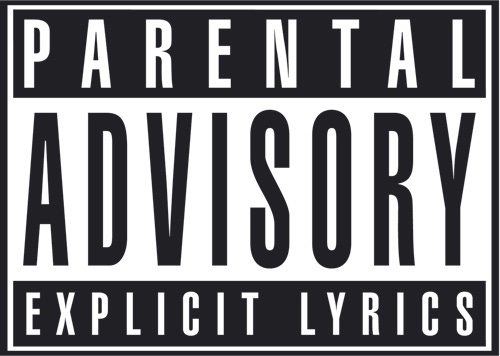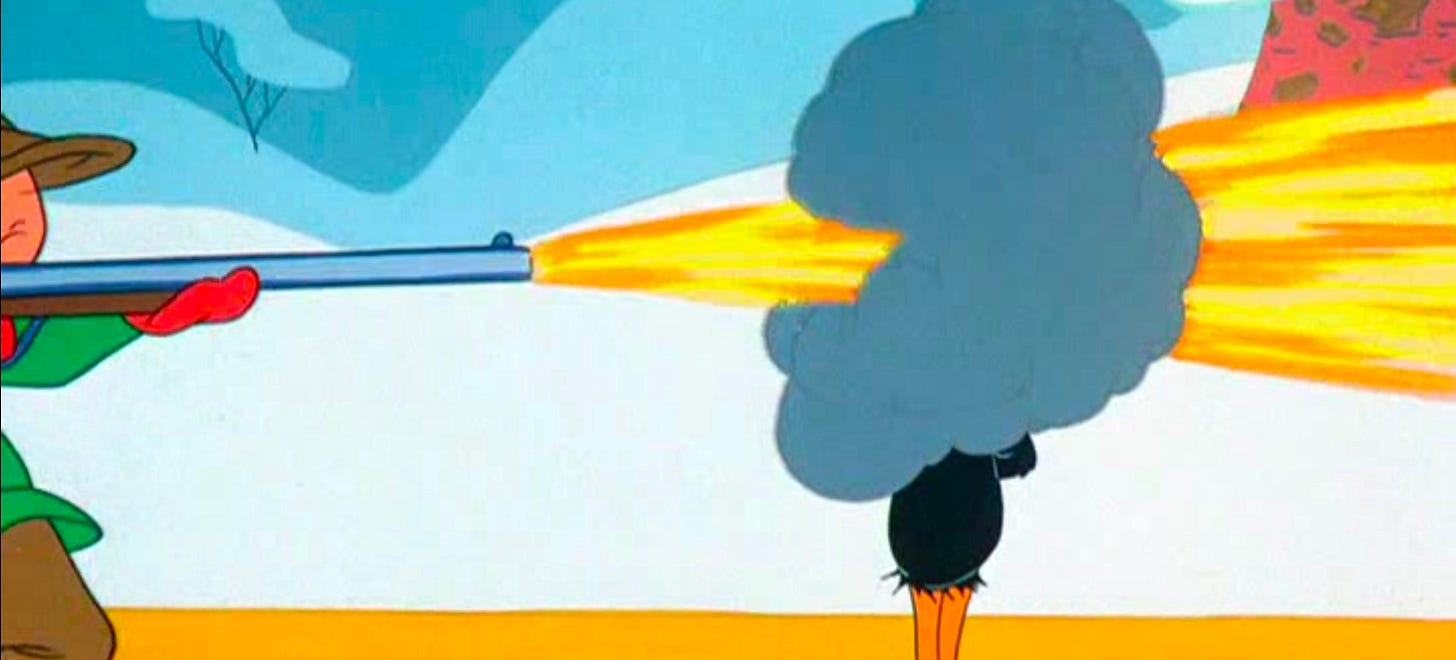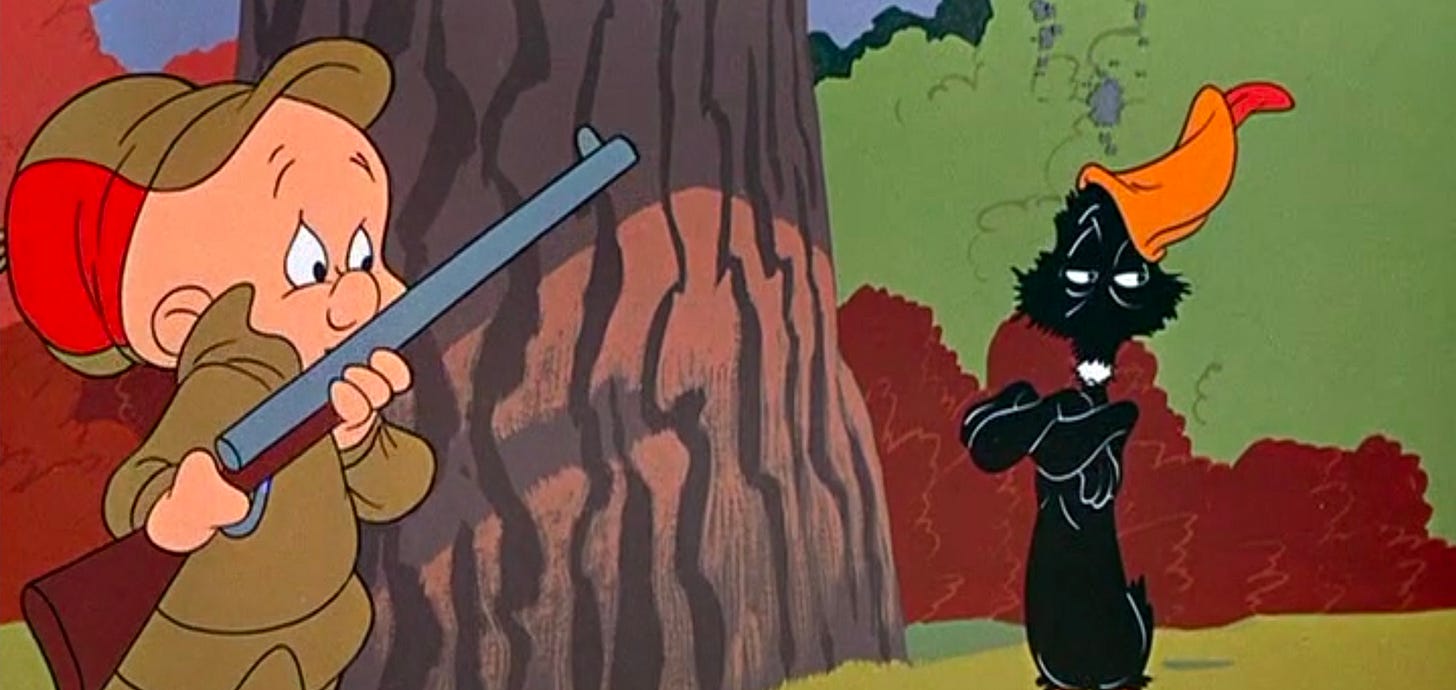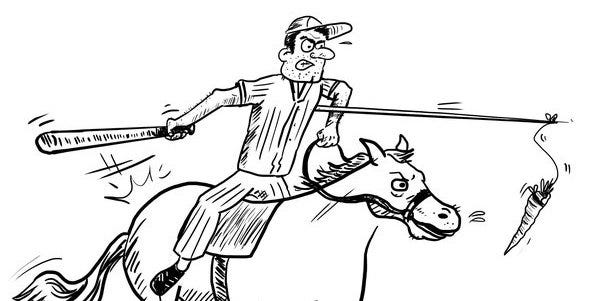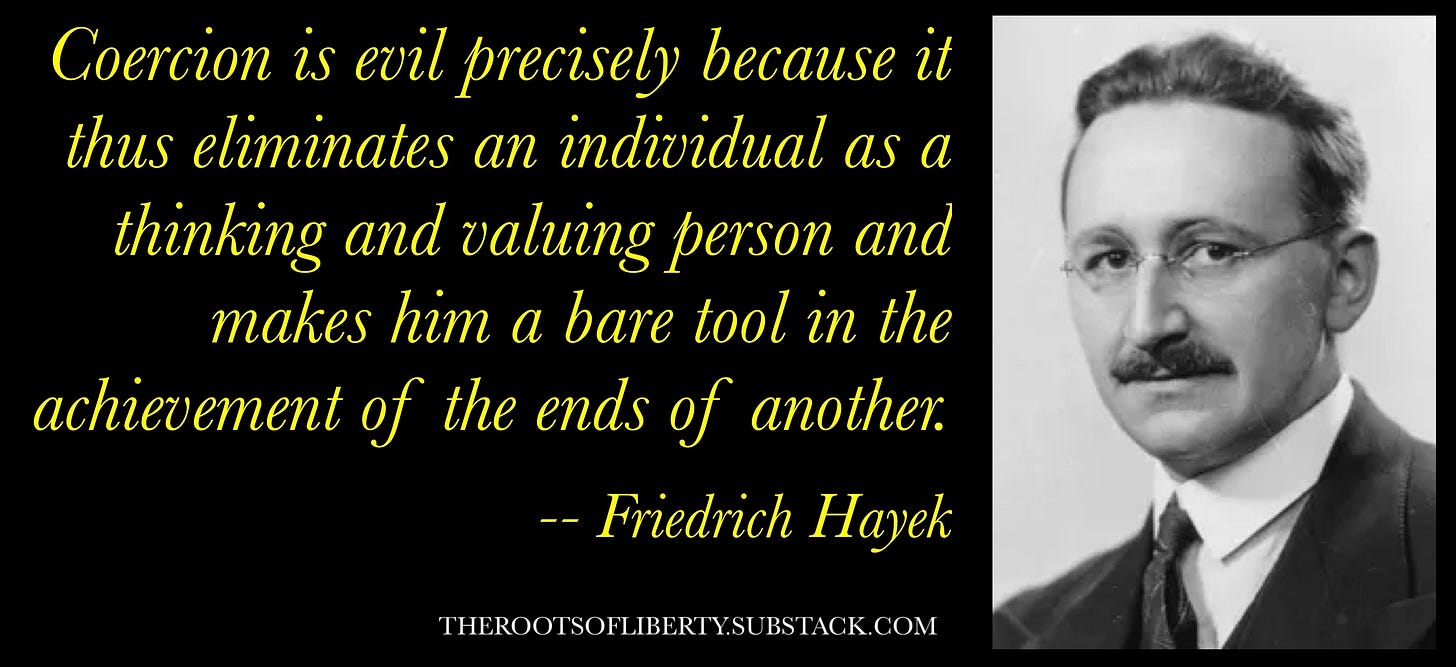Nigh on a century ago, right around the time they figured out how to add sound to movies, there was a brief span where Hollywood produced what we might call "salacious" films. Sex, drugs, violence, naughty language, interracial relations, homosexuality, and other true-to-life but “naughty” for the era behaviors were put up on the silver screen for all who wished to see. This era, now known as "pre-Code Hollywood," spanned only eight years, and ended with the industry-wide enforcement of the Hays Code.
Decades of vanilla, along with a false narrative of American society, followed.
It wasn't until the 1960s that reality started to be re-introduced into film, and the Hays Code was abandoned by 1968. The decade that followed gave us The Godfather (I and II), Blazing Saddles, Taxi Driver, Midnight Cowboy, Chinatown, Dog Day Afternoon, Cabaret, Mean Streets, The Texas Chainsaw Massacre, One Flew Over The Cuckoo's Nest, Shampoo, Carnal Knowledge, Dawn Of the Dead, American Graffiti, The Deer Hunter, Network, Slap Shot, The Taking of Pelham One Two Three, The Bad News Bears, and many other notable films that would never have even been considered in the Code era.
In place of the Hays code, we got the Motion Picture Association of America (MPAA) and its rating system. That rating system is voluntary, but virtually no theaters would carry an unrated film.
Or one that earned an X. While "X" became associated with pornography, a number of now-deemed-classic films (e.g. Midnight Cowboy, A Clockwork Orange, Fritz the Cat, Last Tango in Paris and The Evil Dead) initially received X ratings.
Since movies are business, movie ratings matter beyond simply serving as 'trigger warnings' to consumers. Movie makers have across the decades battled with the MPAA, editing or arguing against edits in order to achieve the rating that would best attract the target audience and best improve the bottom line. Thus, the ratings system is more than mere product information - it affects content.
Jump , now, to 1985. Four "Washington Wives," headed up by Tipper Gore (i.e. Al’s ball-and-chain), formed the Parents Music Resource Center (PMRC) and leveraged their names and contacts into a national platform upon which to pontificate about "bad" song lyrics. The music industry quickly bent the knee, agreeing to voluntarily put the now-farcical Parental Guidance labels on their releases.
Music stores went along, with some of them sequestering labeled albums in a separate section and refusing to sell them to people under a certain age. It may also have been made illegal in some jurisdictions to sell labeled products to minors, in the same manner that under-17s were not to be allowed into movies unaccompanied by an adult.
The label may have backfired on the PMRC, since it served to show kids what the adults didn't want them to listen to, just as the R rating was a magnet to teens (myself included).
Today, thanks to the Internet, movies and music are easily accessed despite those gateways. Both moral panics proved to be busts... but for certain forms of revisionist censorship that ensued.
Television, being a broadcast medium without any gatekeeper feature against kids watching inappropriate content, would offer sanitized versions of movies. Want to have fun? Try to track down the TV edit of Blazing Saddles, which had so much cut that they had to add footage that didn't make it to the final movie cut in order to make it long enough. Such didn't bother me, since the original became forever-available via VHS and its successors.
I'm also not all that bothered by the "fading away" of old content that reflected racist stereotypes. The infamous Warner Brothers "Censored Eleven" can still be found, but they do belong in the rearview mirror.
What did bother me was the editing, across the years, of content that only came to us via television.
The most obvious examples to me were Bugs Bunny cartoons. Elmer Fudd's shotgun blasts suddenly disappeared from the screen, making the me of yore to question my memory. Until I realized that, yes indeed, the millions of us that understood perfectly well that we were merely watching a cartoon were deemed so at-risk or tainted by the graphic that subsequent generations had to be protected.
This phenomenon, ludicrous as it is, has metastasized to literature. What started as a desire to protect young people from reading troublesome language quickly became editing out that language. As in, removing the N word from newer editions of Huckleberry Finn.
There is a colossal chasm of difference between saying "we aren't going to run Coal Black And De Sebben Dwarfs on our channel any more because it's screamingly racist" and altering culturally significant literature in the belief that readers cannot comprehend it as a product of a different time. It's not trusting people to understand that Elmer blasting Daffy’s bill off his face or listening to a Twisted Sister song isn't an impetus to shoot up a school.
Labels placed voluntarily in response to consumer desires isn't where the problem lies. Such labels, provided they aren't used by third party gatekeepers to restrict others' access, are merely informational, and parents have every right to control (and indeed an obligation) to control what their kids read, see, and hear. Peril lies in some deciding on en-masse restrictions, usurping parents' and guardians' roles, and even greater peril lies in the scrubbing of history.
There are bucketfuls of irony and hypocrisy to be found in all this. Those at the fore of removing the N-word from Huck Finn are on the same team as those who want prepubescent children taught about matters sexual against the wishes of their parents. As evidence that the real political divide is between those who'd control and those who reject control, rather than the Left-Right or Liberal-Conservative dichotomies we are so used to applying, consider that the PMRC was headed up by a Democrat, that book removal has proven to be a bipartisan pastime, and that the most censorious people today self-identify as progressive.
Fortunately, a few who pushed trigger warnings on us are (belatedly) realizing they do more harm than good, both to society as a whole and to the people they were intended to protect.
An Internet acquaintance shared the phrase that sub-titled today's bit, in order to imply the fragility of the people who demand the excision of language they don't wish to read. Were the pursuit merely for labels, the rest of us could ignore it all, or use the labels ourselves (in both directions). But, there lies peril in demanding revisions of classic books. Even if an edition labeled as "revised to suit modern sensibilities," the curators, censors, and controllers may push to have that distinction erased at a later date, leaving future generations with the possibility of losing access to the original. No one should have the right to decide that someone else can't read the original Huckleberry Finn.
Moreso, the push toward “acceptable” content undermines art, stifles creativity, and dooms us to monotone messaging that ignores the wide and diverse reality that is human life. Just as the Hays code stifled movies for decades, the “woke code” that has already infested Hollywood pushes freedom and creativity out the window, to the detriment of us all.
A footnote.
This crossed my feed a few days ago.
It is taken as axiomatic, over on the Left, that critics of ‘Woke’ cannot even define the word. This is as blatant a straw man as you are apt to find in the political sandbox today.
Sure, critics express their understanding of woke in different ways, but they’re just variations on the same theme. I’ve offered my deconstruction many times, most recently this past March:
Woke is coercion. Woke is divisiveness. Woke is a demand for submissive conformity. Woke is racism, sexism, and a fistful of other bigotries. Woke is the dehumanization of all who don't agree with you, so you feel less averse to treating them like shit, denying them their rights and liberties, and kicking them out of 'your' society. Woke is a club, in two ways: a weapon with which to smite your enemies, and a restricted space where undesirables are denied entry.
But, Pavlovitz doesn’t overtly set up that straw man in this case. Instead, he engages in the other common approach to rebutting the Right’s criticism of Woke: blatant equivocation.
Definitionally: The fallacy of equivocation occurs when a key term or phrase in an argument is used in an ambiguous way, with one meaning in one portion of the argument and then another meaning in another portion of the argument.
They tell us Woke is kindness. They show us that Woke is coercion. Woke is the cudgel held behind the back, the roll of pennies balled up inside a fist, the brass knuckles slipped from pocket to fingers when you start to get lippy, the stick to be used if the carrot does not entice.
Their notion of kindness is wanting you to say the right words, think the right thoughts, and hold the right opinions. If you don’t go along, and they merely said “we can’t be friends,” that’d be that, and there’d be no hullabaloo.
But that’s not what happens.
Instead, if your voice is public enough, the stick finds you, via “cancellation.” As in career or reputational destruction. A young writer “afraid of being cancelled.” A school principal who questioned an extremist DEI narrative commits suicide. JK Rowling and Joe Rogan demonized for holding “wrong” opinions.
They call it “accountability,” which reinforces the cudgel-like aspect of Woke. But, they’re not holding people accountable for actions that violate others’ rights. Their punishment is for wrongthink, and they are the ones violating others’ rights. When the untouchable golden child of the Left, Barack Obama, supports censorship of speech, we should not be surprised that fundamental American values are defenestrated.
Bottom line: Don’t let anyone gaslight you about Woke. It’s not merely kindness, politeness, or civility. Those who insist that’s all it is are either in head-up-ass denial or outright liars.





